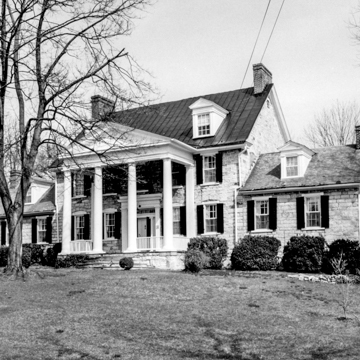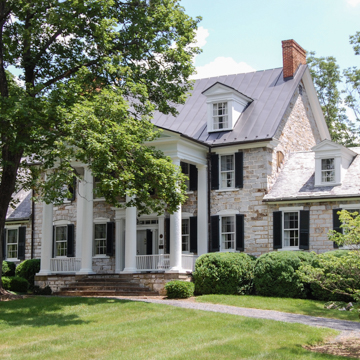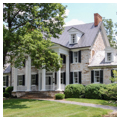This substantial limestone house was constructed by Colonel John Hite, son of Jost Hite, known as the first European settler of the lower Shenandoah Valley. The construction date of the two-and-a-half-story, five-bay house is indicated in a datestone in the south gable end of the steeply pitched roof. Jost Hite settled here in the 1730s at the intersection of the Great Wagon Road (now Valley Pike) and Opequon Creek. His house, also used as a fort and tavern and visited by George Washington in 1748, was constructed shortly after his arrival and survives in a ruinous state in the south yard of Springdale, his son's house. During the mid-nineteenth and early twentieth centuries, Greek Revival and Colonial Revival accretions gave Springdale a more formal look than its original eighteenth-century appearance. The entrance is dominated by the twentieth-century addition of a three-bay, full-height, pedimented portico with monumental Tuscan columns. The entrance's elaborate door surround was added in the mid-nineteenth century and features Ionic columns supporting a plain architrave and stepped entablature.
You are here
Springdale
If SAH Archipedia has been useful to you, please consider supporting it.
SAH Archipedia tells the story of the United States through its buildings, landscapes, and cities. This freely available resource empowers the public with authoritative knowledge that deepens their understanding and appreciation of the built environment. But the Society of Architectural Historians, which created SAH Archipedia with University of Virginia Press, needs your support to maintain the high-caliber research, writing, photography, cartography, editing, design, and programming that make SAH Archipedia a trusted online resource available to all who value the history of place, heritage tourism, and learning.























